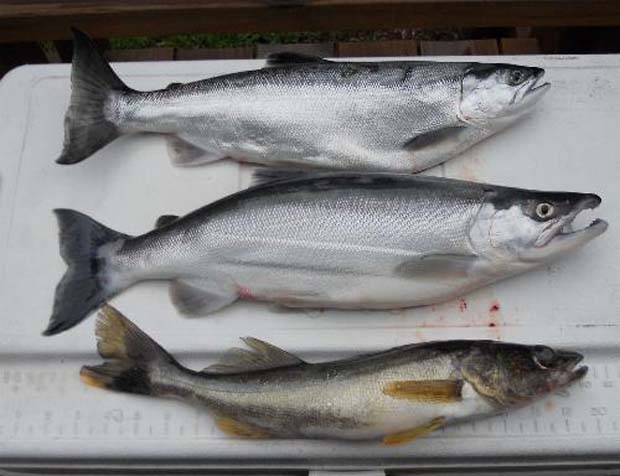[dropcap]O[/dropcap]ne of the most peculiar occurrences in southern trout fishing is underway right now on the Nantahala River in western North Carolina where scarlet red Kokanee salmon are running upstream for a life-ending spawn. Kokanee salmon are the landlocked version of the Pacific sockeye salmon. Stocked in Nantahala Lake in the early 1960′s as forage for the predator population of northern pike, the salmon have been naturally reproducing ever since in the Nantahala River. The average Kokanee salmon average in the Nantahala River is 18″ with many fish over 20”.
Nantahala Lake is located high above the Nantahala River Gorge at a 3,000-foot elevation—a pristine and serene lake with just 30 miles of shoreline. The lake was created in 1942 by Nantahala Power to provide electricity for war efforts. Today the lake is regulated and maintained by Duke Power Company. Anglers enjoy fishing the Nantahala reservoir due to the low number of boaters and the breathtaking scenery. When the lake was created, northern pike were introduced. To provide them with a forage base, Kokanee salmon were later stocked here. The pike are not more, but at this writing, this is the only lake in the South with a population of freshwater Kokanee salmon.
Sockeye salmon (Oncorhynchus nerka)—also called red salmon or blueback salmon in the United States—is an anadromous species of salmon found in the Northern Pacific Ocean. The third most common Pacific salmon species, the name “sockeye” is an Anglicization of suk-kegh as the indigenous people called them. The Nantahala Kokanee is most often caught in the lake prior to the spawning run. Like their saltwater dwelling ancestors, once the Kokanee ascend the river and turn from silver to red, they are dying. Spawning in all that is on their minds and getting one to take a fly is very challenging, much the same as it is in Alaska during these runs. You literally must have a fly in front of one of a spawning Kokanee when its mouth is open to legally catch one. It takes a lot of salmon in a run and a lot of casts to make this happen.







